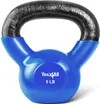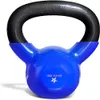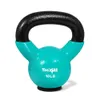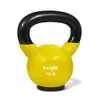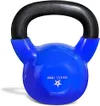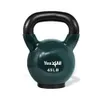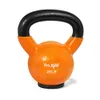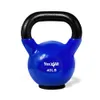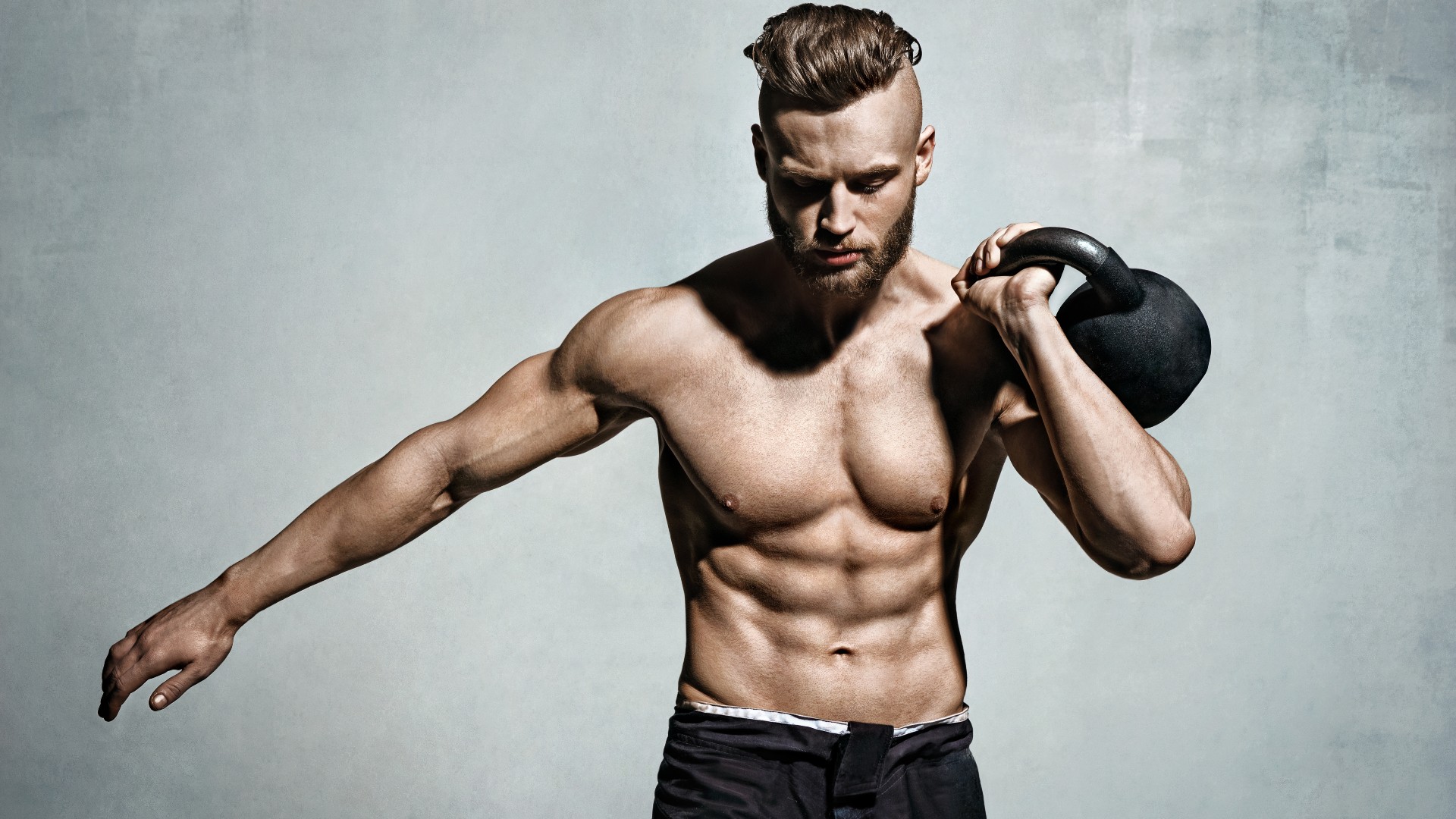
When I’m short on time and equipment (often), I use a medium to heavy kettlebell and get to work strengthening my core muscles at home. These three kettlebell exercises will crop up in my routine because they target multiple muscle groups within the network of core muscles within the body and give my torso a great workout.
For these moves, I recommend one of the best kettlebells for weightlifting. I would opt away from an adjustable kettlebell, but this type of weight can be useful if you know you need to change weights often. If you can, stick to the same medium-heavy weight for each exercise.
Below, I cover each kettlebell abs exercise in more detail, plus ways to scale and the benefits. Grab just one weight, and let’s get started.
What are the 3 kettlebell abs exercises?
Here they are.
Single straight-arm kettlebell sit-ups
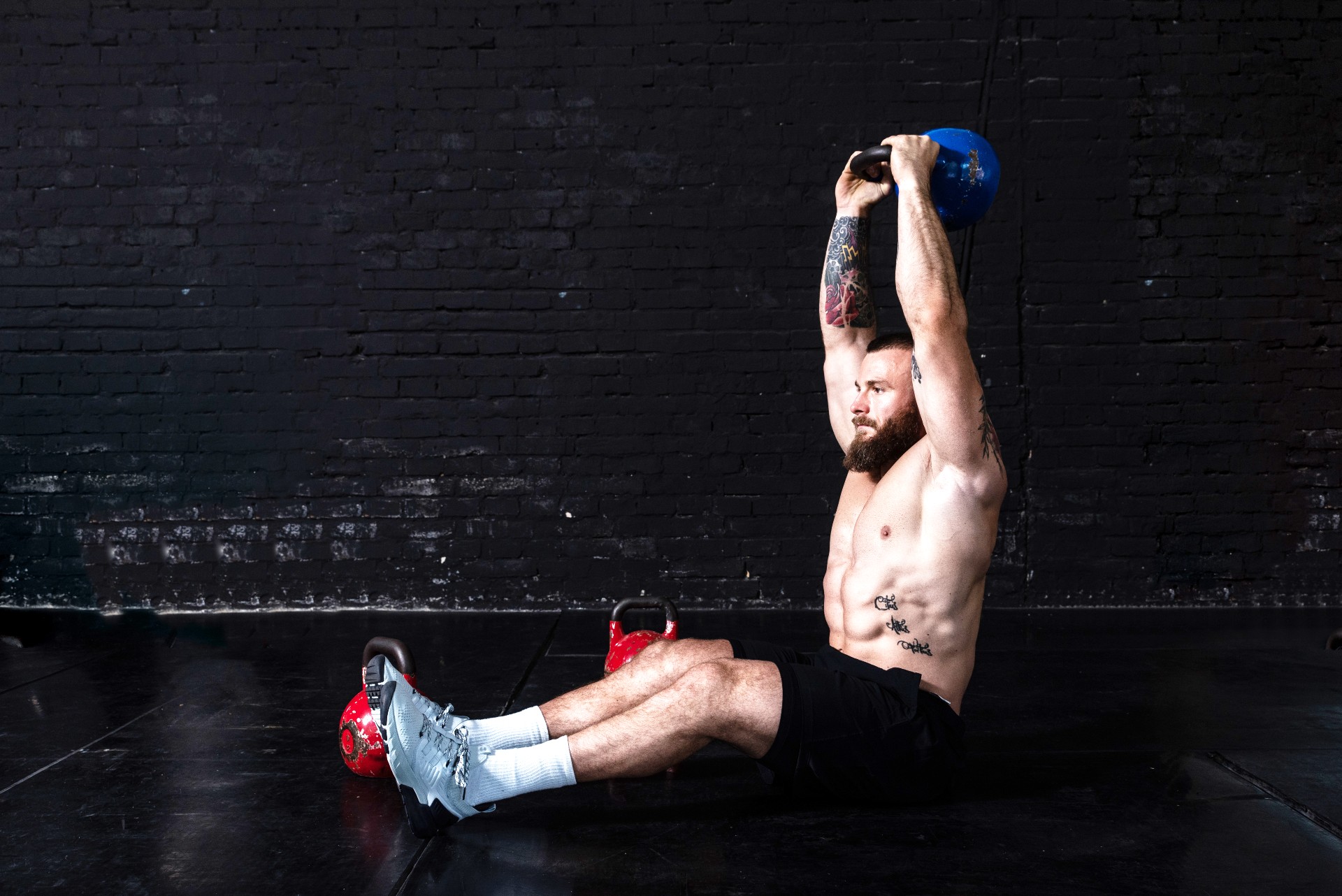
This challenging take on the sit-up requires you to perform the move while holding a kettlebell in one hand, keeping your arm straight as you lift your upper body to a seated position.
If you find this too challenging and don't have many weight options, hold the kettlebell with both hands, or use one hand to grip the floor and support.
- Start on your back with knees bent and feet planted on the mat
- Brace your core
- Hold a kettlebell in your right hand using an overhand grip. The kettlebell should rest on your inner forearm
- Press your right arm overhead with the kettlebell over your right shoulder and the elbow extended
- Using your core muscles, perform a sit-up, pulling your torso upward to an upright seated position. Keep your arm close to your ear throughout so that the weight stays directly over the shoulder
- With control, slowly lower to the floor, rolling down your spine to the starting position
- Switch sides
- Perform 3-4 sets of 8-10 reps.
Kettlebell windmills
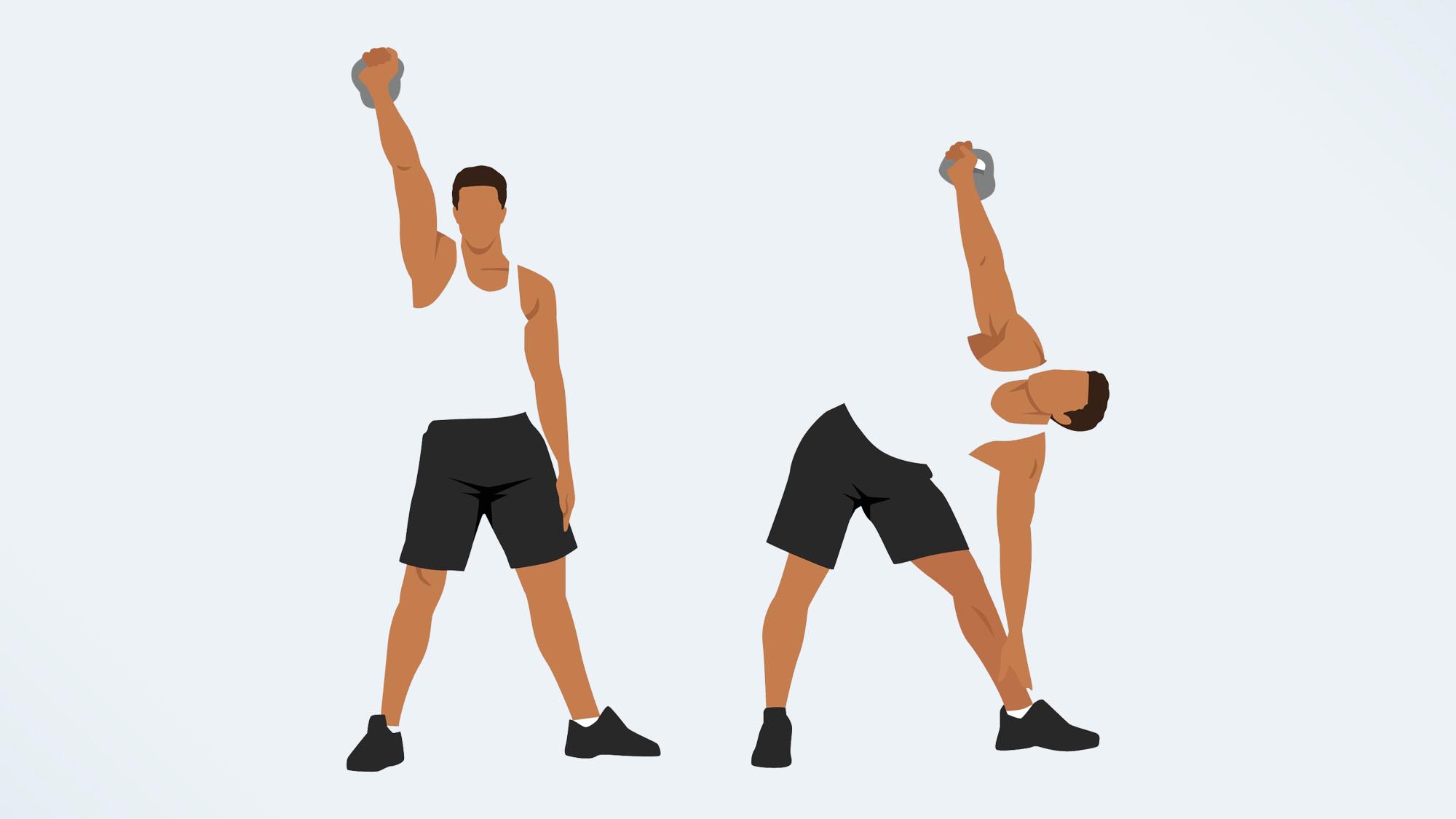
Windmills are a side-body masterclass for the obliques, building core and shoulder stability and strength at the same time. The main challenge is to keep the kettlebell stacked over your shoulder and control it as you lower your body toward the floor. I’d opt for a slightly lighter weight than you’d use for your strongest side.
Sign up to get the BEST of Tom's Guide direct to your inbox.
Get instant access to breaking news, the hottest reviews, great deals and helpful tips.
- Stand with your feet slightly narrower than shoulder-width apart
- Hold a kettlebell in your right hand, then raise your right arm overhead
- Engage your lats and keep your right shoulder pulled back
- Turn both of your feet slightly to the left at a 45-degree angle
- Gaze at the kettlebell, engage your core and shift your right hip behind you, softly bending your left knee
- Slide your left hand down the inside of the left leg, reaching your fingertips toward the floor
- Pause, then slowly raise to the starting position
- Switch sides
- Perform 3-4 sets of 8-10 reps.
Lateral kettlebell swings
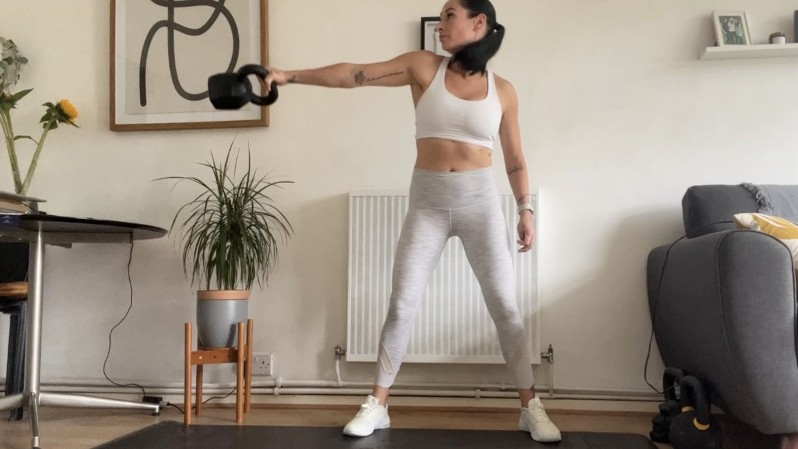
The lateral swing is also a great side-body exercise, targeting the arms, shoulders, hips and obliques.
- Stand with your feet slightly wider than shoulder-width apart and the kettlebell between your legs
- Softly bend your knees, engage your core and set your shoulders back and down
- Grip the weight in your right hand and straighten your arm, then slightly swing it to the left
- Drive the kettlebell across to the right up to shoulder height. Stand tall and squeeze your glutes
- Control the weight across your body to just below and outside of the left knee, hinging at the hips and softly re-bending the knees on the way down
- Switch sides
- Perform 3-4 sets of 8-12 reps.
As the bell crosses over the body, gently rotate your midsection. It’ll look a little like a single-arm golf swing in action.
When training your core, remember to include the three planes of motion to target as many muscle groups as you can. That means rotation, lateral movement and forward and backward motion. These three moves do all three.
Your core muscles are responsible for movement and stability, contributing to different types of motion. For example, your oblique muscles aid side flexion and extension (imagine running your left hand down the outside of your left leg), so you’ll need to include lateral flexion, extension and rotation to strengthen them.
The six-pack muscles (the rectus abdominis) work during spine flexion and extension, so you can target them with moves like sit-ups and kettlebell swings.
If these moves aren’t for you, check out some of my other recommendations below.
More from Tom's Guide
- No, not sit-ups — trainer shares these 6 exercises to blast your core in just 12 minutes
- 5 minutes, 4 exercises, and 1 kettlebell are all you need to build total body strength
- I'm a personal trainer — here's why the 30/30/30 rule is trending

Sam Hopes is a level 3 qualified trainer, level 2 reiki practitioner and senior fitness writer at Tom's Guide. She is also currently undertaking her Yoga For Athletes training course. Sam has written for various fitness brands and websites over the years and has experience across brands at Future such as Live Science, Fit&Well, Coach, and T3.
Having worked with fitness studios like F45 and Virgin Active, Sam now primarily teaches outdoor bootcamps, bodyweight, calisthenics and kettlebells. She also coaches mobility and stretching-focused classes several times a week and believes that true strength comes from a holistic approach to training your body.
Sam has completed two mixed doubles Hyrox competitions in London and the Netherlands and finished her first doubles attempt in 1:11.
You must confirm your public display name before commenting
Please logout and then login again, you will then be prompted to enter your display name.
